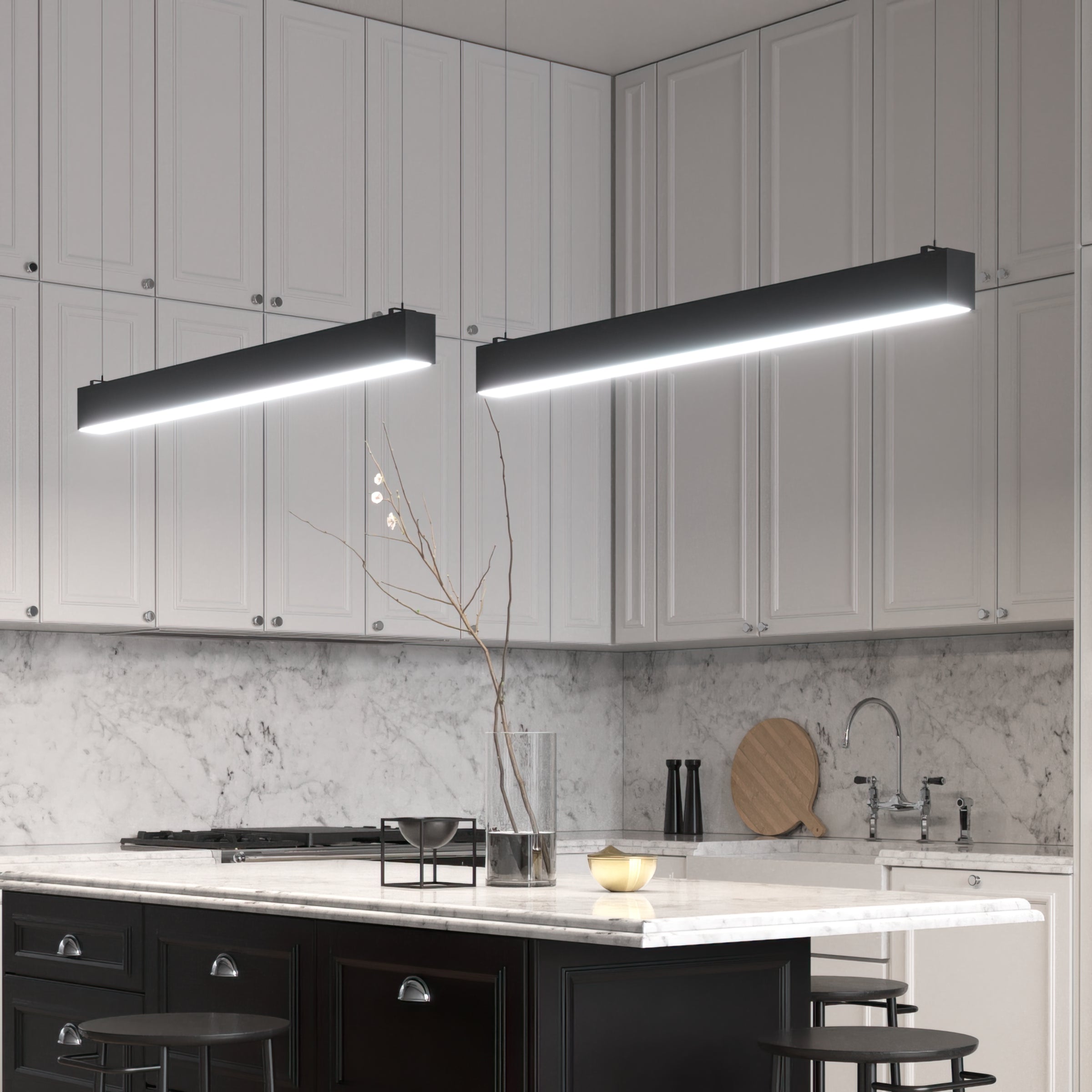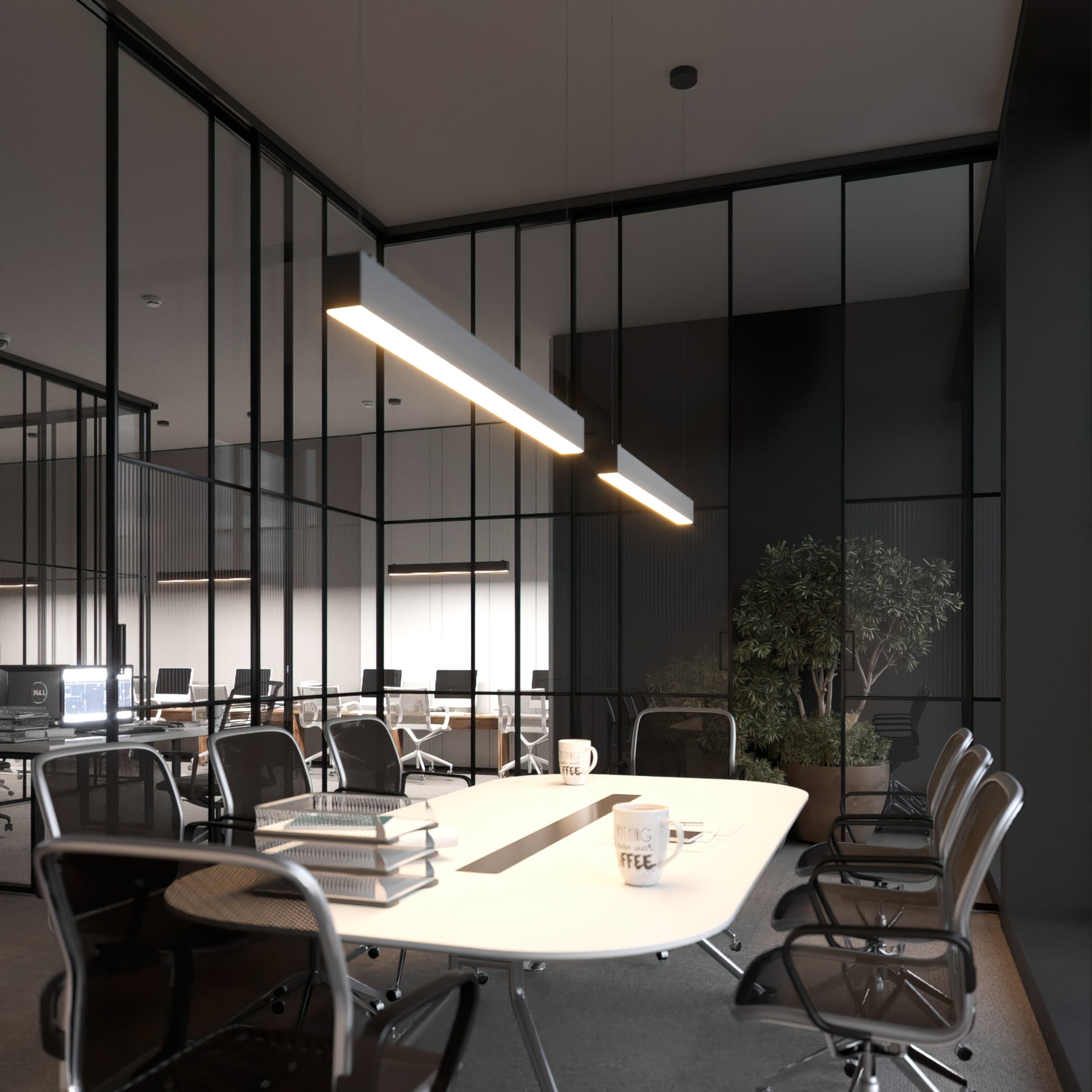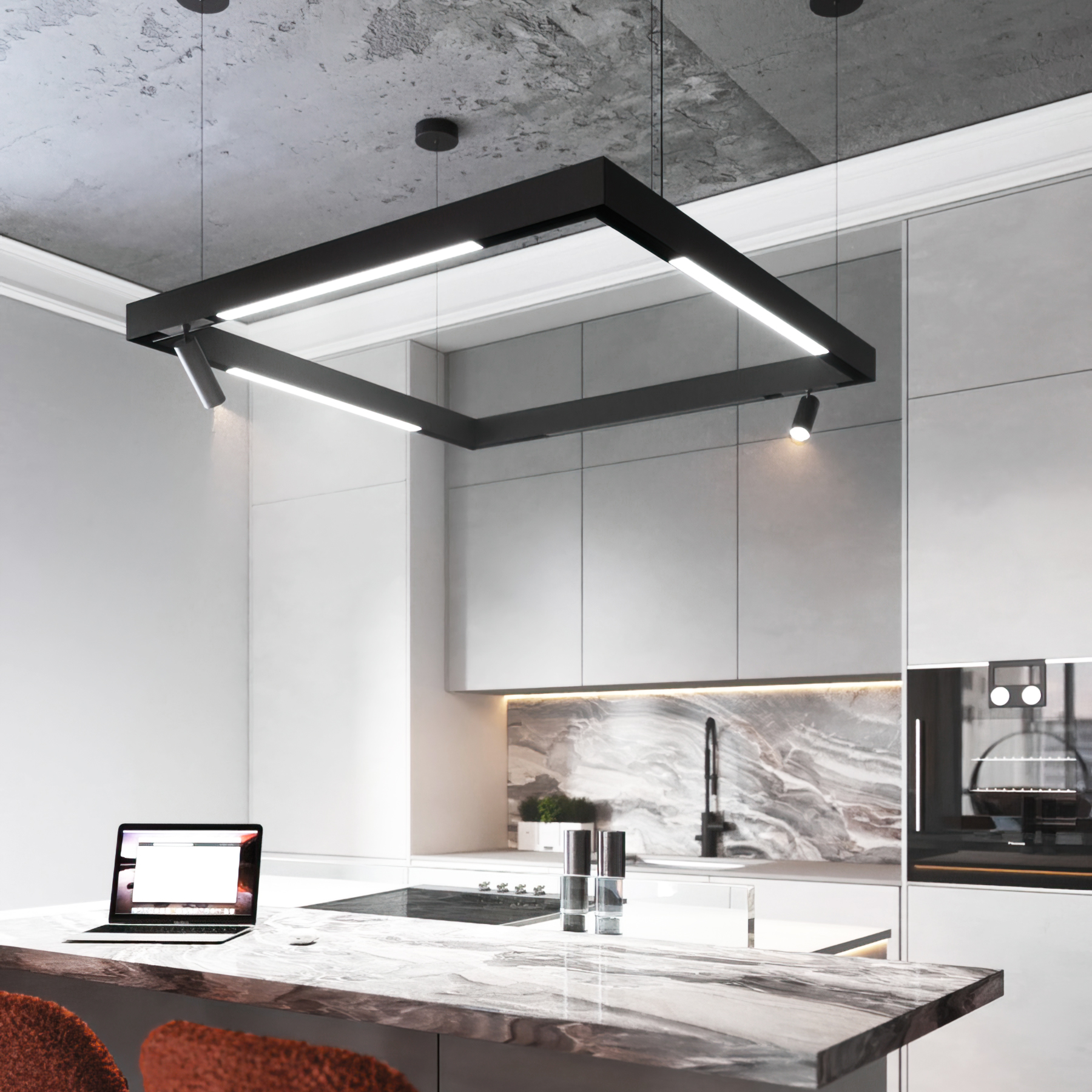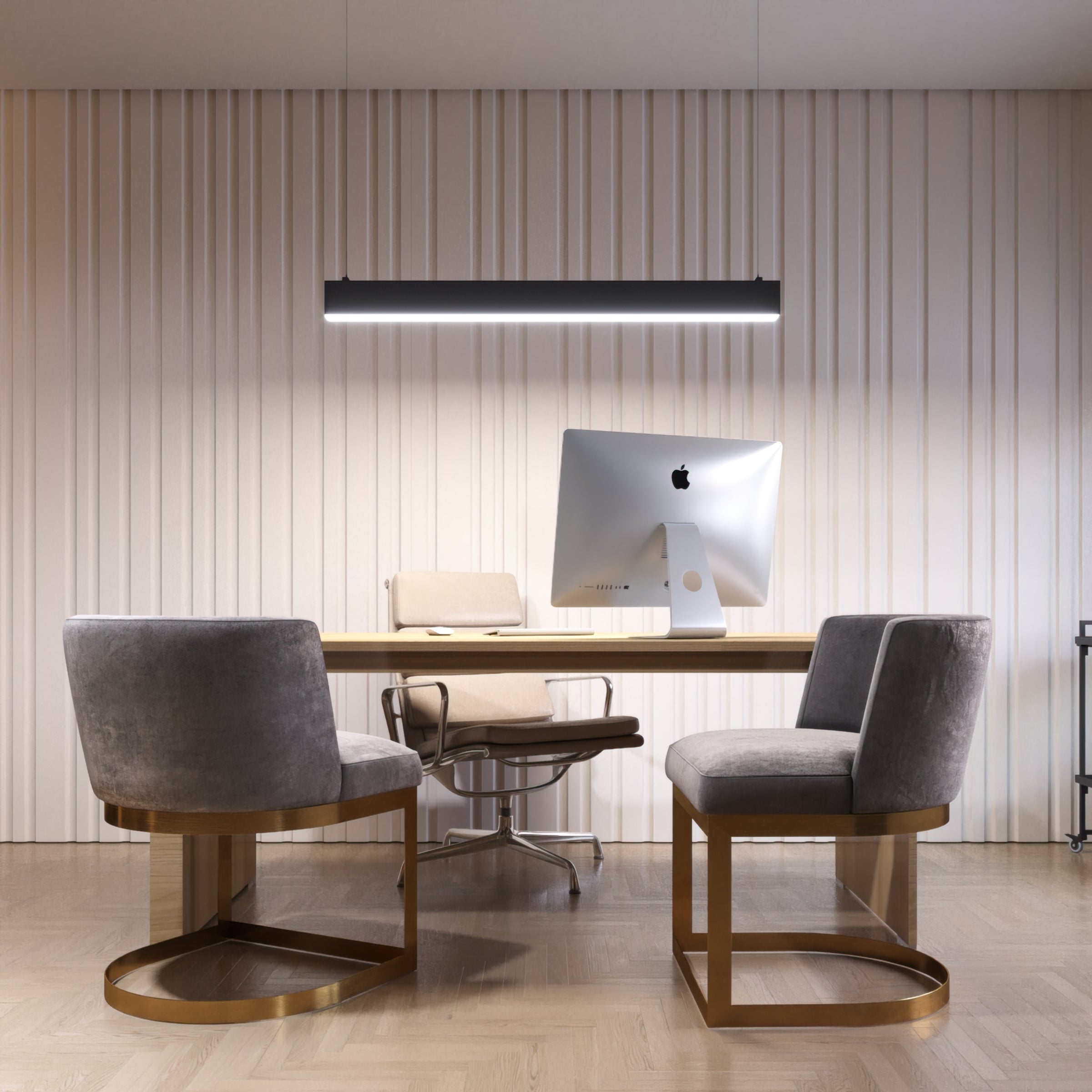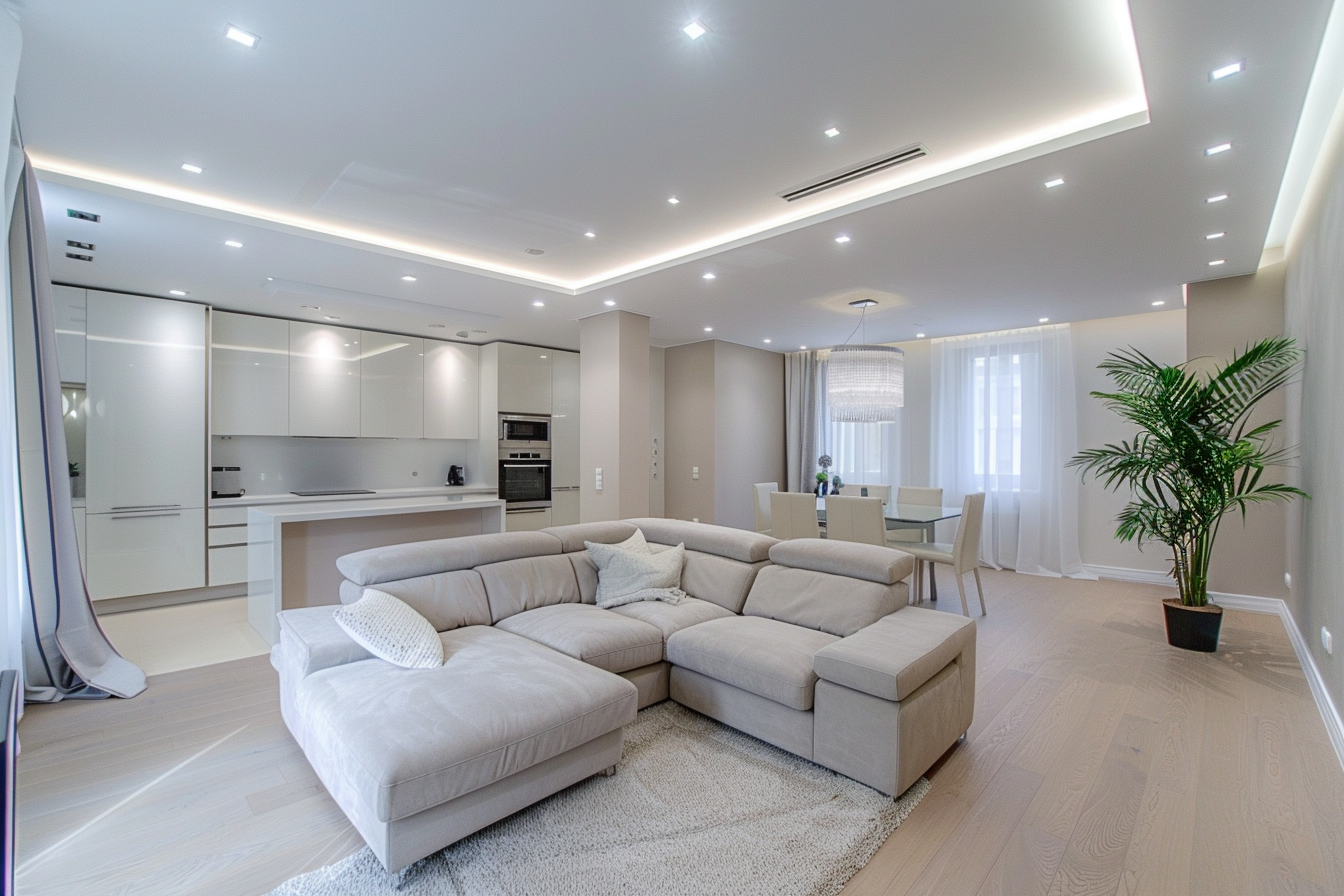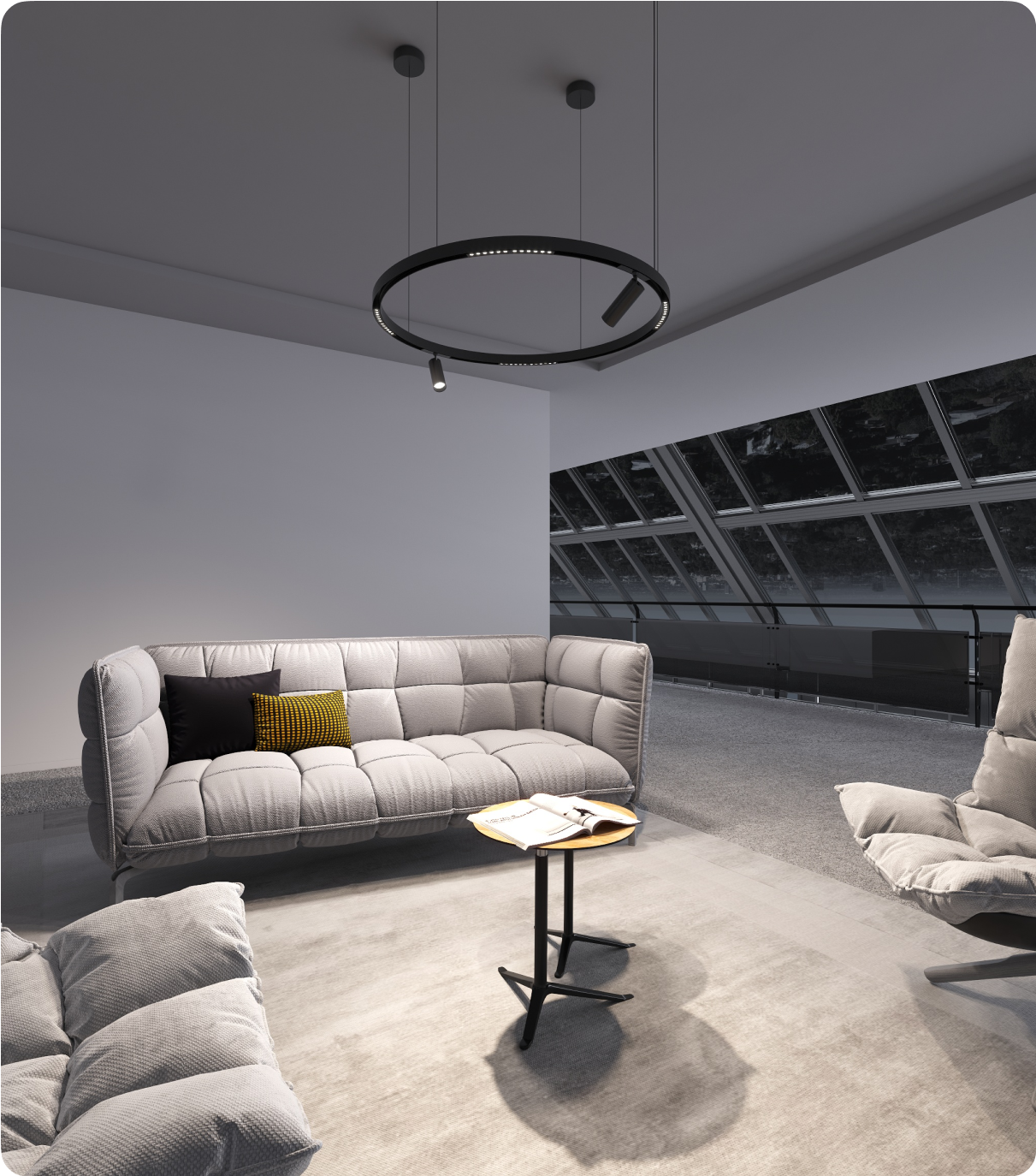Lighting is a fundamental element in home design, playing a crucial role in shaping the atmosphere and functionality of a space. In the living room, which often serves as the heart of the home, well-planned lighting can enhance comfort, highlight architectural features, and create a welcoming environment for relaxation and socializing. The right LED lighting can also influence mood, increase productivity, and even impact the perception of space.
Well-thought-out lighting plans incorporate ambient, task, and accent lighting to achieve a balanced and versatile environment. Ambient lighting provides overall illumination, task lighting focuses on specific activities, and accent lighting adds depth and visual interest. By understanding and applying these principles, you can transform your living room into a beautifully lit space that reflects your style and meets your functional needs.
This article offers a wealth of living room lighting ideas and inspiration for designing adequate lighting. Whether you're looking to revamp your current setup or start from scratch, you'll find creative solutions and practical tips to illuminate your space in style.

Living Room Lighting Ideas
Lighting in your living room can serve functional and aesthetic purposes, enhancing the space in various ways. Here's a breakdown of different lighting options to help you create a well-lit, inviting environment:
Overhead Lighting
Chandeliers, Pendant Lights, and Ceiling Fixtures: Overhead lighting is essential for general illumination in your living room. Chandeliers and pendant lights can add a touch of elegance and become focal points, especially in rooms with high ceilings. Ceiling fixtures, such as flush and semi-flush mounts, offer a more subdued look but are equally effective in spreading light.
Tips for Choosing and Placing Overhead Lights: Consider the room's size and height when selecting overhead lights. Large chandeliers work well in spacious rooms, while smaller pendant lights are ideal for more compact areas. Ensure the light fixture is centered over seating areas or tables to provide balanced illumination. Additionally, dimmable options can offer flexibility for various activities and moods.
Floor Lamps
Benefits of Floor Lamps in Living Rooms: Floor lamps are versatile and add style and functionality. They provide additional light sources for reading or creating cozy nooks and can be easily moved to different areas. For more lounge lighting ideas, consider how floor lamps can be strategically placed to enhance comfort and ambiance.
Examples of Stylish and Functional Floor Lamps: Floor lamps come in various designs, from sleek, modern designs to classic, ornate styles. Consider options like arc floor lamps for a dramatic effect or tripod lamps for a more minimalist look. Ensure the lamp's height complements your seating arrangements and provides adequate light for tasks.
Table Lamps
How Table Lamps Can Enhance Living Room Decor: Table lamps not only provide task lighting but also serve as decorative accents. They can add character and warmth to your living room and are available in countless designs to match any decor style.
Ideas for Using Table Lamps in Different Areas of the Living Room: Place table lamps on side tables next to sofas for reading light, or use them on console tables and sideboards to highlight decor elements. Using varying heights and styles can create visual interest and balance within the space.
Wall Sconces
Advantages of Wall Sconces for Space-Saving and Aesthetics: Wall sconces are perfect for saving floor space and adding a layer of ambient or accent lighting. They can highlight artwork and architectural features or simply provide a softer light source that doesn't clutter the room.
Tips for Placing and Choosing Wall Sconces: Install sconces at eye level for optimal light distribution and consider their proximity to seating areas for functionality. Choose fixtures that complement your decor, and opt for adjustable sconces if you need flexible lighting options.
Recessed Lighting
Benefits of Recessed Lighting for a Sleek Look: Recessed lighting offers a clean, unobtrusive look by embedding lights into the ceiling. It provides even illumination without the bulkiness of traditional fixtures, making it ideal for modern spaces. This type of ceiling living room lighting idea is perfect for those who prefer a minimalist and sleek aesthetic.
Installation Tips and Best Practices: Ensure proper spacing between recessed lights to avoid dark spots and create uniform lighting. Consider using dimmable LED lights to adjust the brightness according to your needs. Professional installation is recommended to achieve the best results and ensure safety.
LED Strip Lighting
Creative Uses of LED Strips for Accent Lighting: LED strip lighting is perfect for adding a touch of modernity and accentuating specific areas. Use LED strips under shelves, behind televisions, or along architectural features to create a dynamic lighting effect.
Tips for Installation and Placement: Ensure surfaces are clean and dry before applying adhesive-backed LED strips. Plan the layout to highlight desired features and consider color temperature options to match your room's ambiance.

Natural Lighting
Maximizing Natural Light Through Windows and Skylights: Natural light can enhance the beauty of your living room and create a sense of openness. Use large windows and skylights to allow maximum daylight to flood the space.
Using Mirrors and Light-Filtering Curtains to Enhance Natural Light: Mirrors can reflect light and make a room feel brighter and more expansive. Light-filtering curtains allow natural light to enter while providing privacy and reducing glare.
Decorative Lighting
Unique Lighting Fixtures as Statement Pieces: Decorative lighting fixtures can serve as focal points and add personality to your living room. These elements can make a strong visual impact, from bold chandeliers to artistic pendant lights.
Ideas for Incorporating Decorative Lighting Elements: Use unique fixtures to highlight architectural features or artwork. Consider placing decorative lights in unexpected locations, like above a coffee table or within built-in shelves, to create a distinctive ambiance.
With these lighting ideas, you can tailor the illumination of your living room to fit your style and functional needs, transforming it into a well-lit, inviting space.
Choosing the Right Lighting
Selecting the proper lighting for your living room involves more than just choosing stylish fixtures. Understanding the different types of lighting and how they impact the ambiance and functionality of your space is crucial. Here are living room ceiling lighting ideas to help you choose the perfect lighting for your needs.

Types of Lighting
Soft White (2700K): Soft white modern lights for a living room create a warm, inviting atmosphere that's perfect for living rooms. It mimics the glow of incandescent lights, making it ideal for cozy spaces where relaxation is essential. This type of lighting is excellent for areas where you spend a lot of time, like seating areas and lounges.
Warm White (3000K): Warm white light provides a slightly brighter yet still warm glow, offering a balance between cozy and functional. It's well-suited for areas where you want more clarity without sacrificing warmth. This type is excellent for living rooms that need a touch of elegance while maintaining comfort.
Cool White (4000K): Cool white lighting delivers a neutral, bright light that is less warm and more crisp. It's useful for tasks that require clear visibility, such as reading or detailed activities. While not typically used as the primary light source in living rooms, it can be effective with other lighting types for specific zones.
Daylight (5000K-6500K): Daylight lighting mimics natural sunlight, offering a bright and refreshing effect. It's excellent for enhancing alertness and can make colors appear more vivid. This type of lighting is ideal for spaces where you need a lot of light for activities or for creating a fresh, open ambiance.
Tips for Choosing Lighting for Different Needs
- Consider Functionality: Determine the primary functions of your living room. If you need a space for reading or work, incorporate task lighting like floor or table lamps with a higher color temperature for clarity. Soft or warm white lighting can enhance comfort for a cozy relaxation area.
- Layer Your Lighting: To achieve a well-balanced look, use a mix of ambient, task, and accent lighting. For example, overhead fixtures can be combined with table and floor lamps to provide general and focused illumination.
- Match Lighting to Decor: Select living room LED lights that complement your living room's style. Modern spaces may benefit from sleek, cool white fixtures, while traditional rooms might be enhanced with warm white chandeliers or pendant lights.
- Adjust Brightness: Use dimmable lighting options to adjust the brightness according to different activities and times of day. This flexibility can help you create the perfect mood for various occasions.
- Test and Adjust: Before making final decisions, test different lighting options in your space. Check how they interact with your decor and adjust to achieve the desired effect.
By understanding the different types of lighting and applying these tips, you can create a well-lit living room that enhances your space's functionality and aesthetics.
Practical Tips and Considerations
When designing your living room lighting, it's important to consider both practical aspects and safety to ensure an effective and sustainable lighting setup. Here are some key tips and considerations:
Dimming Options for Adjustable Lighting
- Versatility: Dimmable lighting offers flexibility, so you can adjust brightness according to your mood and activity. This is particularly useful in living rooms, where you may need bright light for reading or a softer ambiance for movie nights.
- Types of Dimmers: You can choose from manual dimmer switches or smart dimmers that can be controlled via apps or voice commands. Smart dimmers offer additional convenience and can be programmed for different lighting scenarios.
- Compatibility: Ensure that your light fixtures are compatible with dimmer switches. Some LED lights, for instance, require specific dimmable versions to function correctly with dimmers.
Energy-Efficient Lighting Solutions
- LED Lights: LED lighting is highly efficient and lasts a much longer time than traditional incandescent lights. They use less energy, reduce your electricity bills, and are available in various color temperatures to suit different needs.
- Compact Fluorescent Lamps (CFLs): CFLs are another energy-efficient option, offering sound light output with lower energy consumption. However, they contain small amounts of mercury, so proper disposal is essential.
- Smart Lighting: Smart LED lights not only offer energy savings but also allow for greater control over brightness and color settings. Many smart lights can be adjusted remotely, making them a practical choice for modern homes.
Safety Tips for Installing and Using Various Lighting Fixtures
- Professional Installation: For complex lighting systems, especially those involving recessed lighting or extensive wiring, consider hiring a licensed electrician. This ensures safety and adherence to electrical codes.
- Avoid Overloading Circuits: Ensure that your electrical circuits can handle the load of your new lighting fixtures. Overloading can cause overheating and increase the risk of electrical fires.
- Proper Maintenance: Regularly check and replace damaged or malfunctioning fixtures. Ensure that all light fixtures are securely mounted and that lights are the correct wattage for the fixture to avoid overheating.
By incorporating dimming options, opting for energy-efficient solutions, and adhering to safety guidelines, you can create a functional, cost-effective, and safe lighting environment in your living room. Read more about the advantages of dimmable lighting in the article LED Light Dimmers: A Complete Buyer's Guide.
